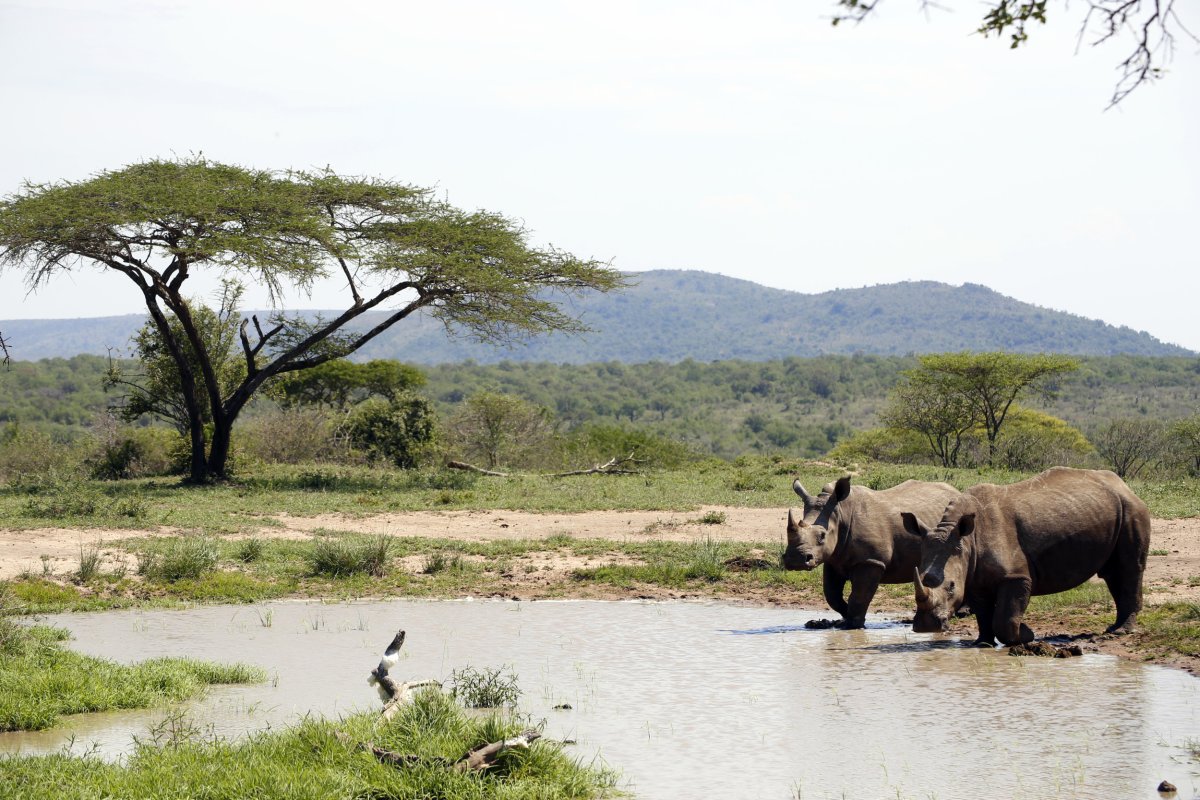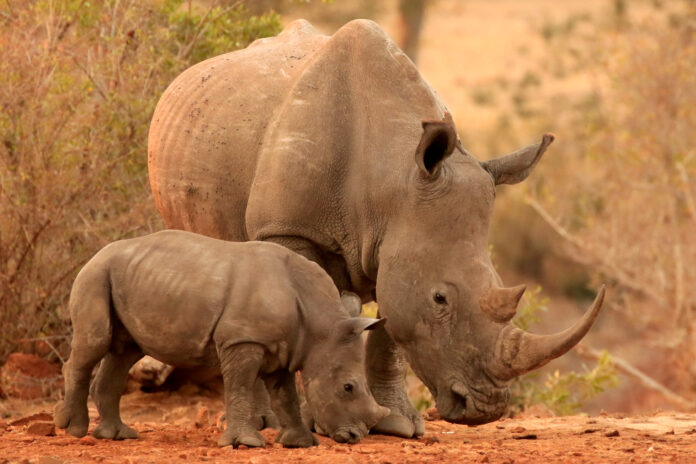As temperatures rise amid climate change, the world’s remaining rhinos may not be able to withstand the sweltering weather.
Both black and white rhinos across southern Africa are expected to be severely impacted by the climate change-driven increasing temperatures facing national parks, where a large proportion of the remaining populations of the species are found, according to a new paper in the journal Biodiversity.
Rhinos are especially vulnerable to intense heat, as they don’t sweat, instead cooling off by sheltering in the shade or bathing in water. The paper marks the first analysis of how climate change may affect these endangered species.
ISTOCK / GETTY IMAGES PLUS
“Generally speaking, most, if not all, species will, in one way or another, be negatively affected by the changing climate,” lead author Hlelowenkhosi S. Mamba, a research student at the University of Massachusetts Amherst, said in a statement. “It is therefore important for conservationists to conduct macroecological assessments over large areas to catch trends and model futures for some of the world’s most vulnerable species to prepare to mitigate climate change’s effects, hence minimizing global biodiversity losses.”
Both species of African rhino have seen rapid population decreases, mainly due to poaching. White rhinos once comprised two species, the northern white rhino and southern white rhino, but the northern white rhino is now considered extinct in the wild. The southern white rhino is listed as “near threatened” on the IUCN Red List, with only around 10,000 individuals left in the wild. Black rhinos are listed as “critically endangered”, with about 3,100 remaining.
The researchers investigated how increasing temperatures in large national parks across South Africa, Namibia, Zimbabwe, Kenya, Botswana, Tanzania and Eswatini could impact the future of the rhino species living there. They modeled two scenarios in the parks, one based on the Intergovernmental Panel on Climate Change’s (IPCC) high greenhouse gas emissions scenario, and the other being a more mild emissions future, and predicted the amount of rain and temperature that each park would see in 2055 and 2085.
They found that in each park it was expected to rise by 2.2 degrees Celsius by 2055 and 2.5 degrees by 2085 in the moderate emissions future, while in the IPCC emissions scenario, each park increased by 2.8 degrees Celsius by 2055 and 4.6 degrees by 2085. All but one park was expected to become increasingly dry in these scenarios.
They then calculated the probability that each park would remain suitable for the rhinos, and found that the increase in temperatures would be more than the rhinos can handle, exacerbated by the decreased precipitation.
“The temperature conditions in all study parks will become increasingly unsuitable for both species, but it is predicted that white rhinos will be affected earlier than black rhinos,” the authors wrote in the paper. “All the parks are showing drastic changes in the occurrence probability of rhinos.”
In the high-emissions scenarios, the likelihood of both species still existing will shrink to zero by 2085.

ISTOCK / GETTY IMAGES PLUS
“All study parks will have zero probability of occurrence for the species throughout their ranges should conditions reach those represented by the [IPCC high emissions 2085] scenario late in the century,” they wrote.
These findings, while bleak, may help to prepare conservation efforts for the challenges of the future.
“This paper highlights the importance of using climate predictions for both park and rhino management,” co-author Timothy Randhir, a professor of environmental conservation at UMass Amherst, said in the statement. “We propose that park managers think now about increasing water supplies, tree cover, watching for stress and planning to allow rhino migration as the world warms.”
Do you have a tip on a science story that Newsweek should be covering? Do you have a question about rhinos? Let us know via [email protected].
Uncommon Knowledge
Newsweek is committed to challenging conventional wisdom and finding connections in the search for common ground.
Newsweek is committed to challenging conventional wisdom and finding connections in the search for common ground.


